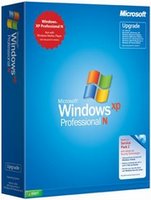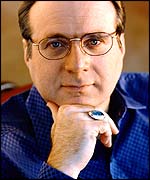
Due credit should go to Purna Chandra Mandal for he forwarded this link to me and Amitesh Hati.
Google Inc. is distributing a free software startup kit designed to make computing safer and easier — a generous gesture driven by the company's desire to steer technology offline as well as online.
The software bundle, unveiled Friday in Las Vegas during a speech by Google co-founder Larry Page, represents the Internet search engine leader's latest jab at industry kingpin Microsoft Corp.
The suite of programs is designed to make it easier to install and maintain basic applications that have helped turn the PC into a hub of information, entertainment and communications.
With the initiative, Google is setting out to prove that it is better positioned to help people get the most out of their computers than more-established software makers, particularly Microsoft — the maker of the pervasive Windows operating system.
"We thought, 'Why can't using a computer be more fun, simple and empowering?'" said Marissa Mayer, Google's vice president of search products and user experience.
Six of the programs in the package are owned by Google, which had previously offered all but one on a piecemeal basis. A screensaver that automatically displays pictures stored on a personal computer is being introduced for the first time as part of the "Google Pack."
With the exception of a Norton antivirus program that is being offered in a free six-month trial, the seven other applications in the Google Pack are already available for free on the Internet.
Mountain View, Calif.-based Google has simply negotiated agreements to create a one-stop shop for all the applications, supplemented with tools to simplify the process for installing and updating the programs.
Neither Google nor the other participants in the Google Pack are paying each other any money, Mayer said.
Although cobbling together a bunch of free software isn't revolutionary, the move could foreshadow bigger things to come as Google's maneuvers to gain more influence over the products people install on their PCs while diminishing Microsoft's power.
If the Google Pack proves popular among PC owners, more software makers are likely to be lining up to be included in future versions — a phenomenon that would give Google even more leverage in its slugfest with Microsoft, said Forrester Research analyst Charlene Li.
"This has the potential of giving Google more control over the software supply chain," Li said. "They in effect could become the arbiters of software taste, determining what's good and bad."
For now, Google is primarily interested in making personal computers easier and more enjoyable to use, Mayer said.
If people spend more time on their computers, Google believes it will receive more Internet search requests — an activity that generates the highly profitable ads that has catapulted its stock and spawned more than $100 billion in shareholder wealth during the past 18 months.
Google's shares surged $14.42 Friday to close at $465.66 on the Nasdaq Stock Market. The stock price reached a new high of $470.50 earlier in the session.
Hoping to stunt Google's rapid growth, Microsoft has invested heavily to expand its presence in Internet search during the past year. So far, though, Google has been able to win even more market share, emboldening the company to embark on far-flung expansion that has increasingly put it on a collision course with Microsoft.
Toward that end, Google plans to distribute even more software as it builds upon the loyalty fostered by its popular search engine.
"I can imagine an operating system that some day does a better job storing your data, using (a) network," Mayer said in a barb clearly aimed at Microsoft.
The Google Pack includes Adobe Systems Inc.'s Acrobat Reader, RealNetworks Inc.'s media player, Mozilla's Firefox Web browser and Cerulean Studios' Trillian instant messaging program.
Notably missing are word processing and spreadsheet programs, though Google pledged in October to work with Sun Microsystems Inc. to promote an open-source version of those applications.
Mayer couldn't explain why the free OpenOffice suite, which includes word-processing and spreadsheet applications, wasn't included in the Google Pack.
Li believes the programs were excluded because Google didn't want to risk including anything that might be difficult to install or interfere with other applications, such as Microsoft's competing Office suite.








